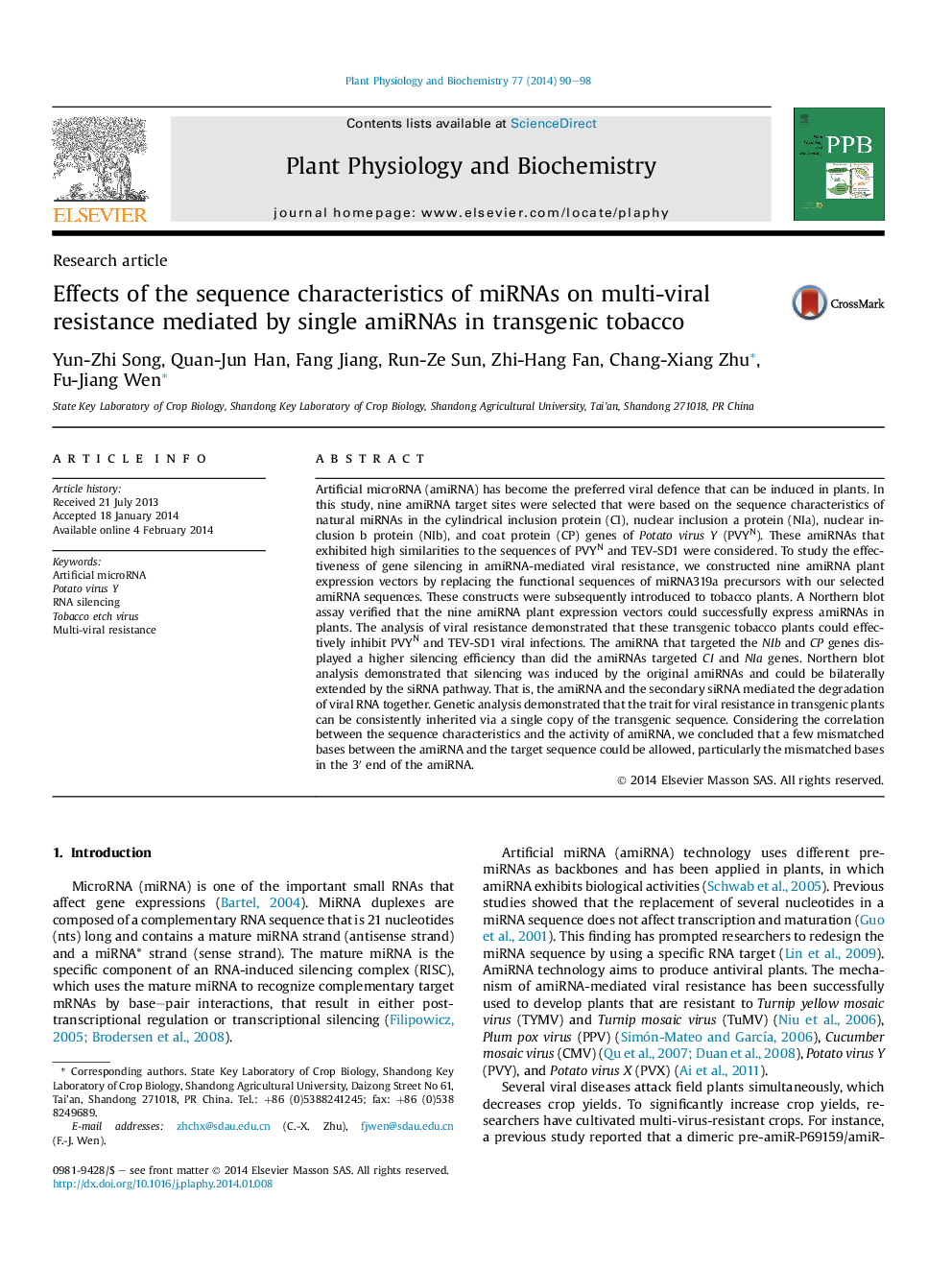| کد مقاله | کد نشریه | سال انتشار | مقاله انگلیسی | نسخه تمام متن |
|---|---|---|---|---|
| 2016237 | 1541944 | 2014 | 9 صفحه PDF | دانلود رایگان |

• Those transgenic tobacco plants harboring the artificial miRNAs could effectively inhibit PVYN and TEV-SD1 viral infections.
• The amiRNA that targeted the NIb and CP genes displayed a higher silencing efficiency than that targeted CI and NIa genes.
• The silencing was induced by the original amiRNAs and the secondary siRNAs mediated the degradation of viral RNA together.
• The viral resistance trait of transgenic plants can be consistently inherited via a single copy of the transgenic sequence.
• A few mismatches between the amiRNA and the target sequence could be allowed, particularly in the 3′ end of the amiRNA.
Artificial microRNA (amiRNA) has become the preferred viral defence that can be induced in plants. In this study, nine amiRNA target sites were selected that were based on the sequence characteristics of natural miRNAs in the cylindrical inclusion protein (CI), nuclear inclusion a protein (NIa), nuclear inclusion b protein (NIb), and coat protein (CP) genes of Potato virus Y (PVYN). These amiRNAs that exhibited high similarities to the sequences of PVYN and TEV-SD1 were considered. To study the effectiveness of gene silencing in amiRNA-mediated viral resistance, we constructed nine amiRNA plant expression vectors by replacing the functional sequences of miRNA319a precursors with our selected amiRNA sequences. These constructs were subsequently introduced to tobacco plants. A Northern blot assay verified that the nine amiRNA plant expression vectors could successfully express amiRNAs in plants. The analysis of viral resistance demonstrated that these transgenic tobacco plants could effectively inhibit PVYN and TEV-SD1 viral infections. The amiRNA that targeted the NIb and CP genes displayed a higher silencing efficiency than did the amiRNAs targeted CI and NIa genes. Northern blot analysis demonstrated that silencing was induced by the original amiRNAs and could be bilaterally extended by the siRNA pathway. That is, the amiRNA and the secondary siRNA mediated the degradation of viral RNA together. Genetic analysis demonstrated that the trait for viral resistance in transgenic plants can be consistently inherited via a single copy of the transgenic sequence. Considering the correlation between the sequence characteristics and the activity of amiRNA, we concluded that a few mismatched bases between the amiRNA and the target sequence could be allowed, particularly the mismatched bases in the 3′ end of the amiRNA.
Journal: Plant Physiology and Biochemistry - Volume 77, April 2014, Pages 90–98